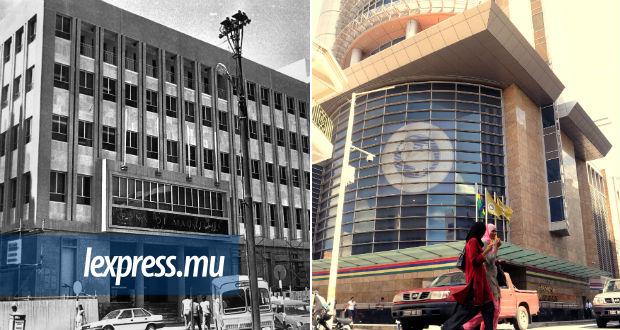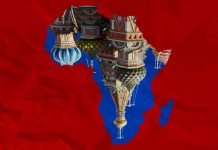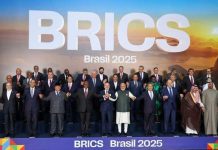Africa-Press – Mauritius. What should the value of the rupee be? This debate is as old as the country itself. In 1968, the pages of «l’express» hosted an article extolling the benefits of devaluation: exports would be cheaper and more competitive, more expensive imports would lead to more consumption of home-based industries (these, remember, were the import substitution days).
But since that exhortation in the days of the nascent independent Mauritian state, devaluation of the currency has been a sobering experience in Mauritian political history and has often come at an exceptionally high political cost.
The first experience of dramatic rupee devaluation came in 1979. During the late 1970s, Mauritius faced a crippling economic situation: world sugar prices fell, hurting export earnings, and oil prices were climbing, hurting foreign exchange reserves.
The then-Labour-PMSD government that had just managed to beat back the MMM in the 1976 elections was under pressure to deliver electoral sops to retain its support.
Squeezed financially, the government faced a balance of payments deficit of US$ 111 million. The then-Finance Minister, sir Veerasamy Ringadoo, lamented that the country was left with just enough to pay for two weeks’ worth of imports.
The economic difficulties were such, historian Sydney Selvon writes in his A comprehensive history of Mauritius, that Ringadoo was forced to turn to the International Monetary Fund (IMF) for help in October 1979.
Part of the price for the IMF’s aid was a 22.9 percent devaluation of the rupee, on 23 October 1979. The step has massive political consequences for the government.
The opposition MMM became even more critical of the government, the PMSD led by Gaëtan Duval and a coalition ally of government, threatened to split the coalition and a group of Labour party dissidents, led by Harish Boodhoo, who had been expelled from the party in July that same year, took a decidedly anti-government line.
Jayen Cuttaree, in his Behind the purple curtain, an account of the history of the MMM, writes that the devaluation had plunged the country “in the midst of an economic crisis”.
Cuttarree wrote that, following the move, the MMM became “sure of winning the next elections” and decided to beef up its own economic doctrine as an alternative to the results delivered by the Labour-PMSD coalition.
The devaluation had the effect of electrifying an already robust op- position against the Labour-PMSD coalition and brought all these disparate currents closer together.
This was demonstrated in December 1979, a few months after the fall of the rupee, when the MMM and Harish Boodhoo’s newly-formed PSM jointly backed a no-confidence motion in Parliament. This was a harbinger of the times to come.
When the motion was presented to Parliament and was voted upon, according to Selvon, the government had barely just scraped through: 35 votes against the no-confidence motion and 33 in favour.
It was not surprising to see why the 1979 devaluation had extracted such a heavy toll. In an official publication released in April 1981, the government had conceded that following the move, the cost of living had skyrocketed by 27 % in the space of one financial year.
A government desperate to put its finances in order had tied its colours to the mast of economic shock therapy, and was paying the price for it. But did the government’s gambit work? Unfortunately, for the Labour-PMSD dispensation, the devaluation and a series of related measures to boost competitiveness and investments did not really pan out.
The continuing fall in export earnings from sugar (because the British pound sterling was also weakening) coupled with two cyclones that hit sugar production hard as well as continuing mistrust by the private sector regarding the political instability in the country combined to ensure that, before long, Mauritius had to go cap in hand once again to the IMF.
In fact, far from pulling Mauritius’ chestnuts out of the fire, 1980 was the only year in the history of independent Mauritius when the economy actually shrank. The price this time was another devaluation, by 16.7 percent on 27 September 1981.
“Two massive devaluations in two years reflected badly on the fiscal policy performance of the government”, said the former Governor of the Central Bank, Ramesh Basant Roi, in a speech summarizing the history of Mauritian monetary policy, in November 2017.
The cumulative effects of the 1979 and 1981 rupee devaluations, the most drastic in the history of independent Mauritius, had played a large part in the turning point of 1982, when the Labour Party, that had run the country since independence in March 1968, was overthrown in an election with a 60-0 verdict; putting an end to one phase of the Labour Party and inaugurating another for the MMM and, eventually, giving rise to another party in due course, the MSM.
Today, in 2018, the debate over what the value of the rupee should be has scarcely changed since it was first brought up on these pages in 1968. And the question still remains the same: are the supposed economic benefits of devaluation – now termed depreciation – worth the political/social costs that they entail? 50 years on, the jury is still out on that one and we are no closer to a definitive answer.
For More News And Analysis About Mauritius Follow Africa-Press







